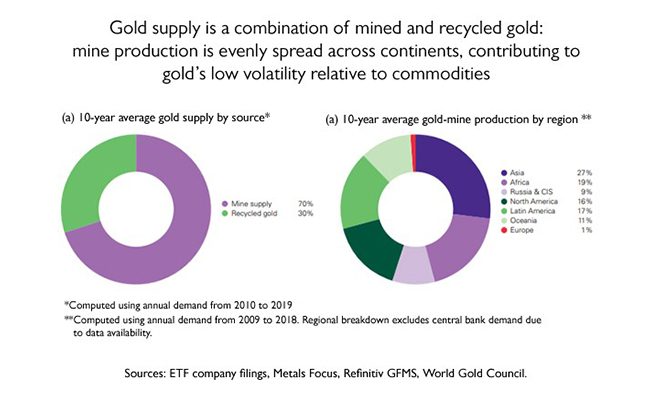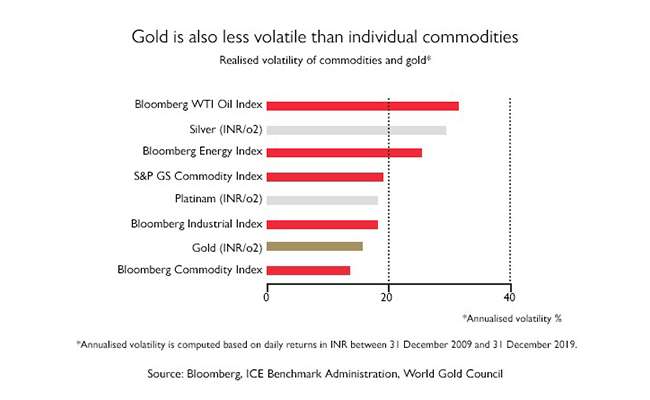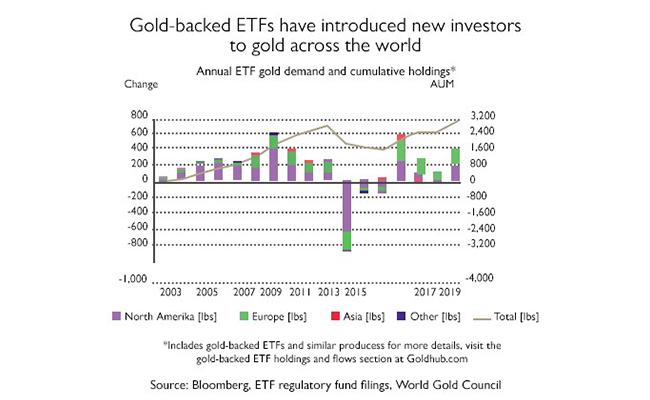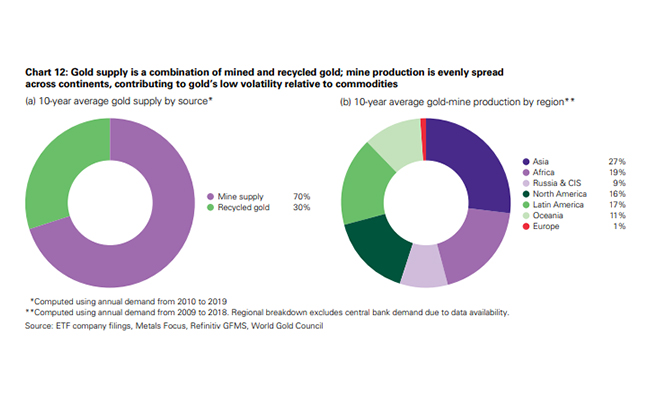Published: 28 Aug 2020
Gold's relevance in Multi-Asset Allocation Funds

Multi-asset allocation funds (MAAF) are hybrid funds that seek to help manage risks better. They are a ideal feasible option for investors looking at a diversified portfolio that can include gold. MAAF allows for a minimum of three asset classes, including equity, debt, REITs, commodities, and gold. MAAFs have inherent features that seek to help hedge investment portfolio risks. These features are diversification that disperses risk over different asset classes, a readymade portfolio that offers versatility at minimal costs and automatic rebalancing which maintains predetermined asset levels.
Related: What makes gold the most useful commodity for investment?
Gold can strengthen MAAF portfo lio in the following ways:
Historical long-term returns
Since 1971, when the Bretton Woods agreement collapsed, gold prices in India have increased by an average of 14.1% every year. This steady, uninhibited increase in the price of gold can be attributed to its diverse sources of demand. It is used as an investment, a reserve asset, an embellishment, and a critical component in technological products. An investment in gold can be made through physical gold, gold-backed ETFs, or other gold-related investments like derivatives and sovereign gold bonds. These various sources of demand have enabled gold to provide stable returns during peaks and dips in the economy. The long-term price of gold historically has been driven primarily by income growth resulting in an increased demand for gold as a consumer product. The minimal supply for gold has grown at a rate of 1.6% per year for the past 20 years.

Can act as an effective diversifier and a safe haven
Gold is recognised as a store of value. As it is a physical commodity, gold cannot be printed in unlimited quantities like money. Gold's scarce supply can allow it to maintain its value over time, making it a safe haven in times of financial stress. Gold can act as a form of protection during economic adversities.

For instance, since 1981 , gold's average annual return of 10% has outpaced the Consumer Price Index during times of inflation. During the 2008-2009 financial crisis, when the value of stocks and other risk assets were corroding at an unprecedented pace, gold was able to maintain its value. SENSEX during the financial crisis fell 56% from December 2007 to February 2009, while gold prices rose by 48% in the same period .
Related: How did the 2008 financial crisis impact gold?
Highly liquid
The gold market possesses this amazing binary; gold is limited in supply, yet the market historically has been highly liquid. Gold liquidity has not dried up in times of financial distress, as is the case with other assets, such as Indian government bonds, Indian stocks and currencies. The introduction of gold-backed ETFs offers the additional way to invest in gold with India-listed funds trading at an average of INR 18 million per day.

Current allocation of gold in the MAAF landscape in India
As per market regulator SEBI's categorisation, there are 7 MAAF with Assets Under Management totalling INR 132.3 billion at the end of 2019 . Out of this, 5 MAAF's include a sizeable allocation of gold:
| Funds | Assets Under Management in INR billions | Gold Allocation % |
| SBI Multi-Asset Fund | 2.5 | 17.7% |
| HDFC Multi-Asset Fund | 2.1 | 16% |
| ICICI Prudential Multi-Asset Fund | 119 | 11.3% |
| Axis Triple Advantage Fund | 3 | 13.6% |
| Quantam Multi-Asset Fund | 0.2 | 15.8% |












